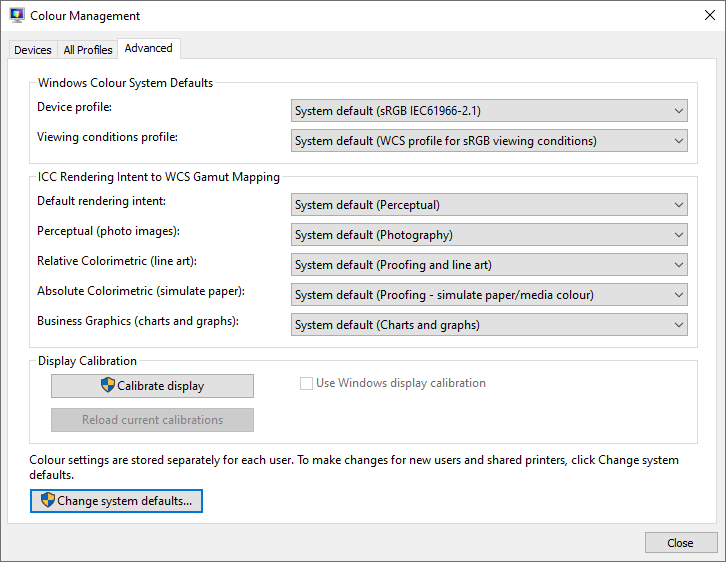Search the Community
Showing results for tags 'affinity publisher' or 'affinity suite' in content posted in Frequently Asked Questions about V1 Software.
-
If you have macOS Monterey, Big Sur or macOS Catalina you may notice that our apps are taking 20+ secs to launch after starting your Mac from cold or after rebooting your Mac. However, subsequent launches should be fine. This issue has been logged with our developers but a workaround can be found here.
- 1 reply
-
- affinity suite
- big sur
-
(and 2 more)
Tagged with:
-
Affinity Photo macOS (1.10.5): MD5: 920c0663518cedf46dcbde600bf8ebca SHA1: de0d465fa11eee58271b5892b6c3d4cf793c5c7d SHA256: 7786101767815037942ca918629958b691d266601f72be063e7c209978813149 Windows (1.10.5): MD5: 45b48e04a879b117b10a08ae2a99e190 SHA1: be3faeacef0b1c471aa4fa981a4726a8eff95021 SHA256: 8b44177b86f22d2b2c4f31e94eaf7e2ac28fdb7095e087d265473450118c2db0 Affinity Designer macOS (1.10.5): MD5: 6fab80e2aac88ceebe583abe0fc4d995 SHA1: 7deb27b26b7e11a3a8fafd28a9677a53d3acedca SHA256: bbcdc5540233d2cfa6daba0512fb61417119cffcb28012e08b04d1693989d390 Windows (1.10.5): MD5: ebe16cfcc3bec9d8fbdad976740fbc61 SHA1: e881db30fab434361fad1fa5b8894148e67c04eb SHA256: adeeb1b791ddaa8100a19110e8c90270ab69943f78f5b10a196239a95a981b7b Affinity Publisher macOS (1.10.5): MD5: 9b8f0b4f0bb4134f8c81b4db97be8087 SHA1: 1bfbbe41853b744bf58604b005c66803abf4202f SHA256: 96a72789dc8bd9a84bbd4333cf8cc4076b84dde4dba21d551be3904024ba35d7 Windows (1.10.5): MD5: e28f8c316ee14086b97b98b3a0890389 SHA1: e00e8610d147e3dafac5f2f673ffa3bf0be3ed1a SHA256: 68c4932f925fa967e78f965499bf33f55eecdc96004f8ea40295d4a15014f25d You can also use simple downloadable resources such as this to verify the files. Another method is to use Terminal within macOS, as outlined here.
- 1 reply
-
- affinity photo
- affinity publisher
-
(and 2 more)
Tagged with:
-
If you purchased your Affinity app through the Mac App Store you may see the error Failed to Open File when trying open a document into the app. You may also get the error Failed to Save Document when trying to save or export a document from the app. You may also notice the app taking several minutes to load. This issue is caused by using a Font Manager to activate a large amount of fonts and Sandboxing. Any app purchased through the Mac App Store will be Sandboxed. Sandboxed apps are designed to prevent unrestricted access to user data and system resources. It also limits the amount of files/resources a Sandboxed app can open within the app. If you're using a Font Management app and you have a large amount of Fonts activated, 2,000 or more, and they're not stored in one of the below default macOS Font Locations, you may experience the issues mentioned above: Library > Fonts System > Library > Fonts Users > {Username} > Library > Fonts If you suspect that you're having this issue, open the Console app and then open the Affinity app and look for any errors similar to: Sandbox: Affinity Designe(1637) deny(1) file-read-data /Users/{Username}/Desktop/Font Cache/{Fontname}.ttf To get around this issue, please deactivate any fonts that are not needed or try moving your fonts to one of the default macOS Font Locations specified above.
- 1 reply
-
- macos
- affinity suite
-
(and 1 more)
Tagged with:
-
Affinity Publisher uses the Hunspell Engine for spell checking and it also allows for additional Hunspell dictionaries to be added. You can download additional dictionaries from LibreOffice's GitHub page here but you can find direct links in the below post. Once you've downloaded the correct file(s), you can use them in Affinity Publisher by following the below instructions: Please note: There are some differences between how you install Hunspell dictionaries for macOS/Windows, since we use the default spelling dictionaries available within macOS but it's also possible to add custom Hunspell dictionaries too. macOS You may already have Spelling dictionaries available but not active within macOS. To check, go to: System Preferences > Keyboard > Text and select Set up... from the Spelling drop down menu. Please check the required language if available. If it is, check the required language and restart Affinity Publisher for the dictionary to appear within the app. If the required language is not available within macOS, you can install standard Hunspell dictionaries for use with Affinity Publisher. Hunspell dictionaries consist of two files, xx_XX.dic and xx_XX.aff. Copy both the .dic and .aff files to: ~/Library/Spelling Once you have done this the language should become available to select from the Spelling drop down menu in System Preferences > Keyboard > Text. Once you've checked the required language, restart Affinity Publisher for the dictionary to appear within the app. Hyphenation dictionaries can also be installed in a similar way but they must be installed into a subfolder. Navigate to ~/Library/Spelling/ as above and create a subfolder with a name in the format of xx-XX ( substituting xx-XX for the locale id ). The dictionary comes as a single file with a name in the format hyph_xx_XX.dic - this file should be copied to the subfolder. Now restart Affinity Publisher for the dictionary to appear within the app. Windows You can add additional dictionaries and hyphenation dictionaries by going to Edit > Preferences > Tools. The default Additional dictionary folder used by the app is C:\ProgramData\Affinity\Common\1.0\Dictionaries but you can change this location by clicking Browse... - Please make sure that you specify a folder that holds all subfolders for each locale and not one specific locale folder as this will not work!To copy any downloaded dictionaries and hyphenation dictionaries to the Additional dictionary folder click Open... but before copying your files to this folder you will need to create a subfolder with its name in the format of xx_XX ( substituting xx_XX for the locale id ). Once you’ve done this you can copy your xx_XX.dic, xx_XX.aff and hyph_xx_XX.dic files to the subfolder. Now restart Affinity Publisher for the dictionaries to appear within the app. Please note: Any changes to dictionaries require that you restart Affinity Publisher
-
We've had quite a few reports from users that Bitdefender is flagging/blocking downloads from the Affinity Store as being infected with a Gen:Variant.Mikey.119369 virus. We can confirm that all files downloaded from the Affinity Store have all been scanned before being made publicly available to users. This is a False Positive and as been reported to Bitdefender - it can take up to 72 hours for them to update their app.
-
- affinity suite
- bitdefender
-
(and 1 more)
Tagged with:
-
If the PDF was placed in the document using Version 1.8 or earlier and is embedded rather than linked, the original PDF data will not be available. The solution is to Replace the document in Version 1.9 using Resource Manager. Version 1.9 ensures that for any PDF that is placed as embedded a copy of the original PDF data is included in the document to enable Passthrough if desired.
-
- affinity suite
- 1.9
-
(and 2 more)
Tagged with:
-
The 1.9 updates added the ability to register your Affinity apps and sync content, purchased from the Affinity Store, directly into Affinity apps . You can find more information about registering your Affinity app and content syncing here and here Please note: If you're using a Mac you will need to be using macOS Sierra 10.12 or above for this feature to work. If you're using a non-supported version of macOS, you will need to manually download and install content purchased from the Affinity Store. More information can be found under the How to install content from the web section here
-
- registration
- affinity suite
-
(and 2 more)
Tagged with:
-
The Publisher Workbook uses the Google font Muli for headings in the Alice Book project. The Muli font has since been renamed to Mulish on Google Fonts which means some pages of the workbook are incorrect. Fortunately, you can download the correct font, Mulish, from Google Fonts for use with the Alice Book Project. https://fonts.google.com/specimen/Mulish
-
- affinity publisher
- workbook
-
(and 1 more)
Tagged with:
-
If you're having performance related issues with Affinity apps on macOS Big Sur and you're using a gaming mice, Intellimouse or other high-end input device, you could be experiencing the issue described here:
-
- affinity suite
- macos big sur
-
(and 3 more)
Tagged with:
-
The resource files included in the Affinity workbooks are zipped up folders so the first thing you will need to do once you have downloaded the files is right click them and hit unzip or extract. You should now notice a new folder has appeared in the location you have the zipped file stored, this will contain all of the assets needed for you to follow the chapter you are working on. If you are having difficulty downloading the files please note that the web address for the files has to be written in the same format as the below examples. The link will always be http://affin.co/(insert chapter file name here). You will find the page numbers for the download link of each chapter for both Workbooks below: Affinity Designer Workbook Resources Affinity Photo Workbook Resources Affinity Publisher Workbook Resources Still having problems? Read the below instructions for more help.
-
UPDATE: This issue is now resolved in the 1.9.0 update which is now available from the Affinity Store and Microsoft Store. We've had reports that our apps no longer start after installing the Windows 10 October 2020 (20H2) update. This update is changing the default Device profile in Colour Management to a Virtual profile. If you see the below information in Application Logs in Event Viewer after trying to start our apps - Description: The process terminated due to an unhandled exception. Exception information: System.ArithmeticException Exception information: System.OverflowException at System.Windows.Media.Imaging.ColorConvertedBitmap.FinalizeCreation () at System.Windows.Media.Imaging.BitmapImage.FinalizeCreation () at System.Windows.Media.Imaging.BitmapImage.EndInit () at Serif.Affinity.ResourceManager.GetBitmapSourceCore (System.String) at Serif.Affinity.UI.AboutDialog..ctor (Boolean) at Serif.Affinity.Application.RunSingleInstance () at Photo.Application.Main (System.String []) Please go to Colour Management > Advanced > Windows Colour System Defaults and change the Device profile from scRGB virtual device model profile to sRGB IEC61966-2.1 Once changed, the app should run as expected.
-
After updating to macOS Big Sur you may notice that ICC profiles stored in ~/Library/ColorSync/Profiles/ are no longer available in Affinity apps. This issue has been logged with our developers. Please Note: If you're using Affinity Photo you can use File > Import ICC Profile to import your ICC profile into the app. If you're using Affinity Designer or Affinity Publisher, you can manually add these profiles into the app through finder. Please navigate to the below location, depending on app and install source - Affinity Store version: Affinity Designer: ~/Library/Application Support/Affinity Designer/profiles/ Affinity Publisher: ~/Library/Application Support/Affinity Publisher/profiles/ Mac App Store version ( Big Sur ) : Affinity Designer: ~/Library/Containers/Affinity Designer/Data/Library/Application Support/profiles/ Affinity Publisher: ~/Library/Containers/Affinity Publisher/Data/Library/Application Support/profiles/ Once added to this location, restart the Affinity app and you should find the profiles available.
-
- affinity suite
- big sur
-
(and 1 more)
Tagged with:
-
Affinity apps are designed to use both CPU and GPU to process and render on screen. Overall performance will differ from system to system due to differences in hardware and available system resources. The OS can also play a part in how well an app will perform, always ensure that no matter which of our supported operating systems you have installed that it is fully up to date with all available updates. You can also check to make sure that the system is also running the latest video card drivers. There are several options listed in Preferences > Performance that can be adjusted to increase the performance of Affinity apps on your system. They are: RAM usage: By default it’s set to the amount of RAM your system has, some users have reported getting better performance by adjusting this slider. However we do have conflicting feedback , some report increased performance when lowering and others when increasing this by small increments. Display/Renderer: (On screen rendering only) Mac users: Ideally this wants to be set to Metal if available, if you do encounter any issues try setting it to OpenGL. Windows users: Like above this ideally wants to be set to the primary graphics card installed in your system. Also check with your video card manufacturer to ensure you have the latest drivers available. If you are experiencing crashing when creating documents, panoramas etc, try changing this to WARP. Hardware acceleration macOS: Most modern Macs will have Metal compute available and this should be enabled. However if you do experience issues it’s worth turning off and comparing performance. Windows: In the 1.9 update to Affinity and option to enable OpenCL hardware acceleration was added in line with new features being added to Windows and compatible display drivers. If you do notice performance issues, please try disabling OpenCL within the app and test. It's also worth checking to make sure the graphics drivers are the latest available. View Quality: Try reducing View Quality from Bilinear to Nearest Neighbour. Retina Rendering: Try reducing Retina Rendering from Automatic to Low Quality (fastest). Please note: Some performance issues can relate to individual files or resources used within your particular document. In these cases we prefer a copy of the file, if possible, for testing - once testing is complete any files will be deleted. Start-up times: It's not something we have a lot of control over, however our apps do load fonts during opening. If you have a lot of fonts installed this will have an effect on the apps opening time and it may be worth reducing the amount of installed fonts.
-
After launching the app you may notice the app's Welcome screen is missing content and the Affinity logo is displayed instead. This can be caused by your firewall blocking the app from connecting to the internet. If you've temporarily disabled your firewall or added our apps to your firewall's whitelist, please try the advice from @carl123 mentioned here:
-
If you're getting an error when installing our app(s)/update, please read the following thread for more information. However, if you're getting a Setup Failed error or the Installer Window UI isn't displaying correctly, please read the appropriate instructions below: Setup Failed Error: If you’re getting the error Setup Failed when trying to install our app(s)/update, please try the following suggestions listed below Installer Window UI Issues: If you’re not getting Setup Failed when installing our app(s)/update you could be experiencing one of the issues listed below How to find your SetupUI.log file: If you've tried all of the suggestions listed above, please locate your SetupUI.log file using the steps listed below Common errors shown in SetupUI.log: There are several known errors that can be easily spotted within the SetupUI.log file. See below Microsoft recommends installing this app from the Microsoft store: If you get this error when trying to install our app(s), please try the following suggestion listed below
-
If you purchased your Affinity app from the Affinity Store, your licence details will be stored in an .xml file which can be found in the below locations, depending on the operating system you're using. Deleting the Licence.xml file will remove the licence details used by the app prompting you to re-enter your licence details when you next launch the app. Windows: C:\ProgramData\Affinity\{APPNAME}\1.0\licence.xml or C:\Program Files\Affinity\{APPNAME}\licence.xml macOS: /Users/{USERNAME}/Library/Group Containers/6LVTQB9699.com.seriflabs/{APPNAME}/licence.xml If you're having problems navigating to one of the the above folders, try the following: On Windows: Open the Run window ( Win + R ) and enter the above path or use the address bar in File Explorer enter the above path and press Enter. On macOS: Open Finder and press SHIFT + CMD + G and enter the above path.
-
- affinity store
- affinity suite
-
(and 2 more)
Tagged with:
-
If you're having issues exporting to PDF, you may be advised by the Support team to enable PDFLogging. This will allow our developers to look into your issue further and hopefully figure out what's causing the issue. For Windows: Create a folder called temp on the root of your C:\ drive so you have folder at C:\Temp\ Run PDFLibLogging.reg - this will create a registry entry that enables logging for PDF Export Run Affinity and export to PDF and then click OK to accept the error message. Go to C:\Temp\ and send the newly created PDFlib.txt file to the support team as requested Now run PDFLibLoggingRemove.reg to return your settings back to normal PDFLibLoggingRemove.reg PDFLibLogging.reg
-
Applications Affected: Affinity Photo Affinity Designer Affinity Publisher Operating Systems Affected: macOS Windows Description of the issue: When moving scrolling/panning around complex/image heavy documents the app can crash. Recipe: Load a fairly complex document Scroll/pan with the document open Other Notes: We struggle to consistently reproduce this in-house, but have heard of multiple users with this issue. If you encounter it, please embed all images into a cope of your file and upload it to this link so we can use it for testing and further attempt to consistently reproduce this issue Known Workarounds: Unfortunately there are no known workarounds in 1.7.3 but 1.8.0 will fix this problem (and 1.8.0 beta builds are already available at this time, see below).
-
Applications Affected: Affinity Photo Affinity Designer Affinity Publisher Operating Systems Affected: Windows Description of the issue: Rotated objects with stoke(s) print incorrectly - the stroke gets thinner based on the rotation amount Recipe: Create a new A4 document Draw 5 rectangles with no fill and 5pt black stroke Rotate one rectangle 30deg, one 60deg, one 90deg, one 180 deg and leave one at 0deg rotation Print document to scale Note the Stroke width is being calculated incorrectly and appears to get thinner based on rotation amount. Known Workarounds: Tick "Rasterise entire page" in Print > Rasterization dialogue
-
If you're trying to start an Affinity app but it's failing to start, crashing on startup or the user interface is not displaying correctly, please check out our list of issues caused by Third Party apps: Issues Caused By Third Party Software The most common issues from the list are caused by the following apps: RivaTuner: Affinity crashes on startup Duet Display: The user interface is not shown, other than a portion of the welcome window, and the document FastPictureViewer Coded Pack: Affinity crashes on startup D3DGear: Crash when creating or opening a document Actual Windows Manager: Affinity crashes on startup ***( Unverified but reported by a user in this forum post )*** Graphics Card Drivers: See below If you don't have any of the Third Party apps listed in the above link and the app is still crashing, please start a new thread and attach your crash report - this will allow our support team to investigate your issue further. You can find out more information about crash reports in our Where to find Crash Reports FAQ.
-
Even though it's possible to specify which Graphics Card (GPU) is used within our apps by going to Edit > Preferences > Performance and selecting the relevant Graphics Card (GPU) from the Renderer dropdown menu. Sometimes, you may need to use Window's Graphic Performance Preference to force Affinity to use your Integrated Graphics Card (GPU) or Dedicated Integrated Graphics Card (GPU) if Affinity is crashing or failing to start because of out of date Graphics Card drivers. More information can be found here. You can use Window's Graphic Performance Preference in Graphics Settings to force a specific app to use your Integrated or Dedicated GPU. To do this: Open the Settings app and go to System > Display Under the Multiple displays section, click Graphics Settings If you've purchased the Affinity Store version: Select Classic App from the Choose an app to set preference dropdown menu Browse to the location of the Affinity .exe file. For example: C:\Program Files\Affinity\Photo.exe and click Add If you've purchased the Windows Store version: Select Universal App from the Choose an app to set preference dropdown menu Now select the relevant Affinity app from the list and click Add Now select the Affinity app and click Options Your Integrated GPU ( Power Saving GPU ) and Dedicated GPU ( High Performance GPU ) will be listed Select High Performance and click Save When you next run your Affinity app it will use the GPU you've just set within Window's Graphics Settings.
-
We've had a few users report that when opening RAW files into Affinity Photo on a Surface Pro they appear darker than expected. This issue is resolved by running the Colour Calibration tool within Windows. For instructions on how to do this, please read the following article on Windows Central: https://www.windowscentral.com/how-calibrate-your-pcs-monitor-windows-10











